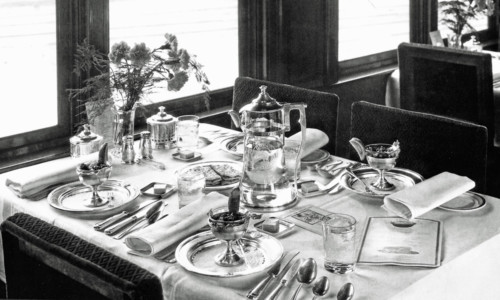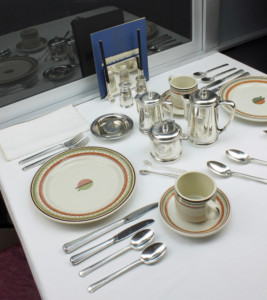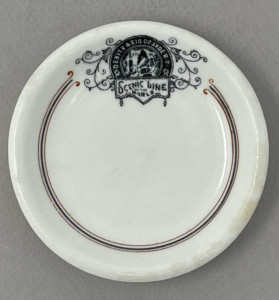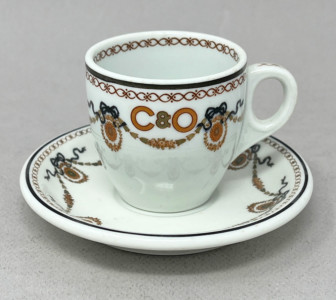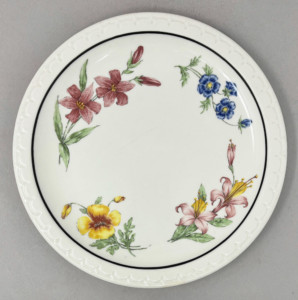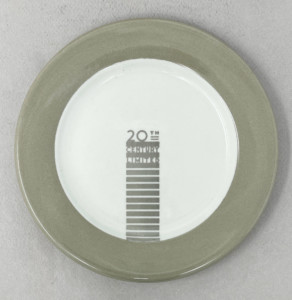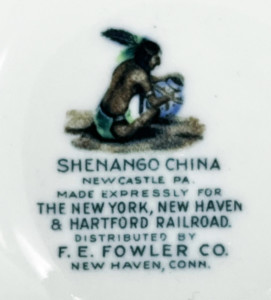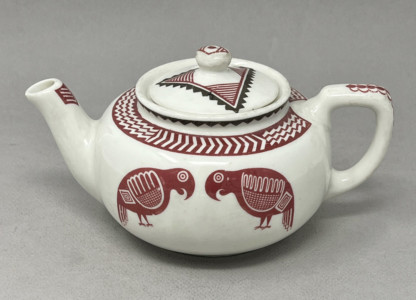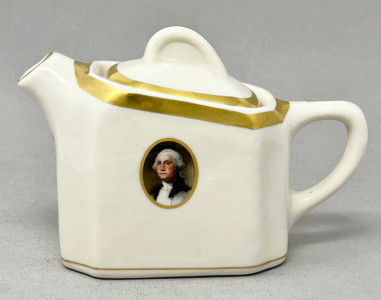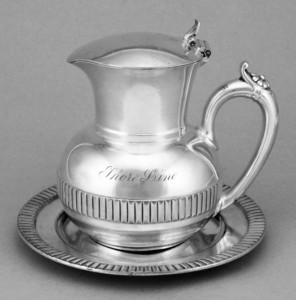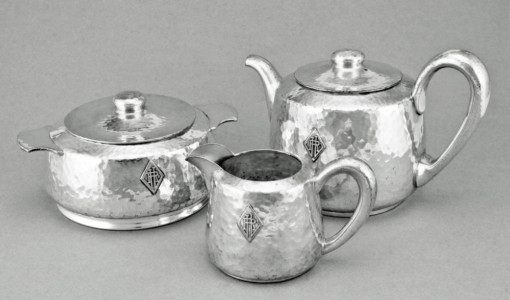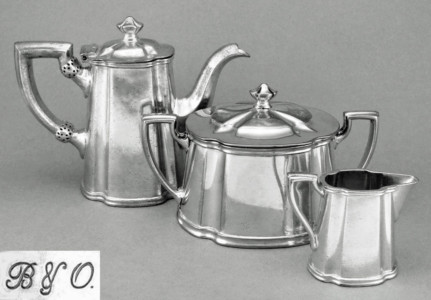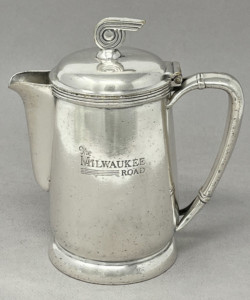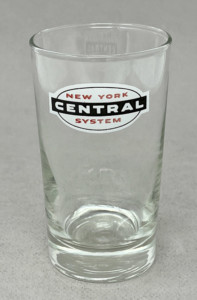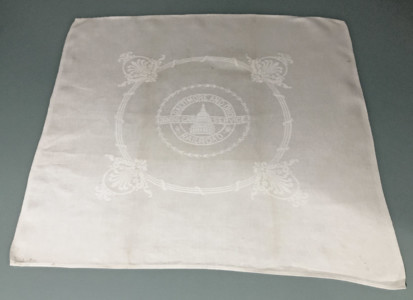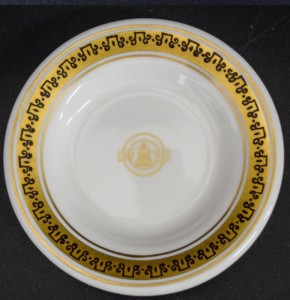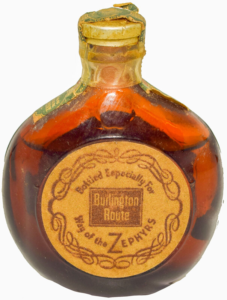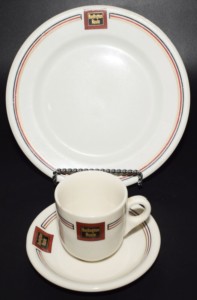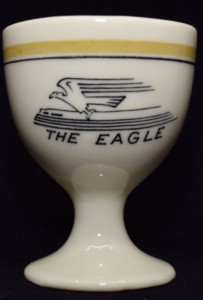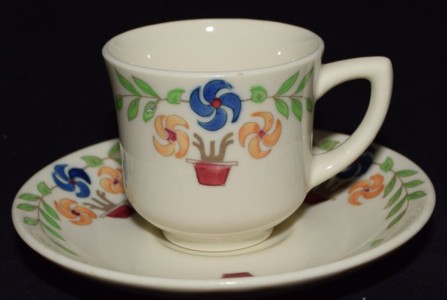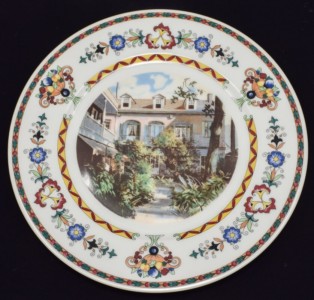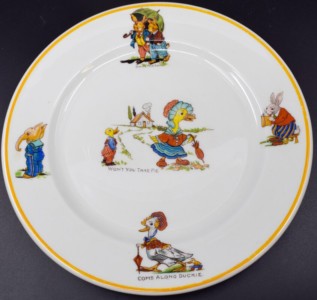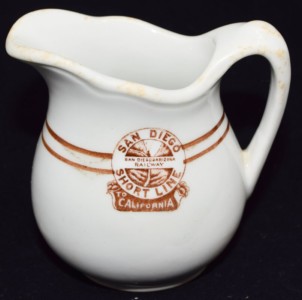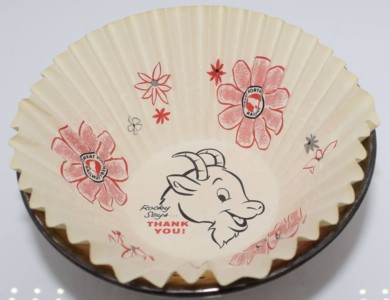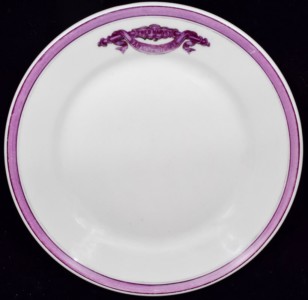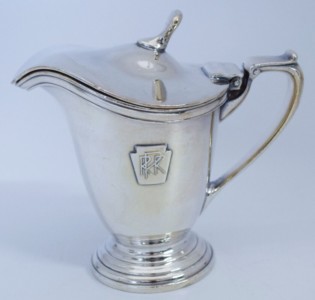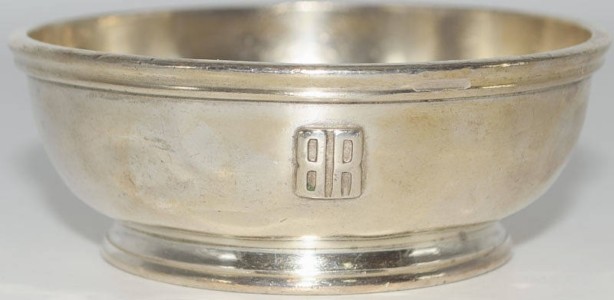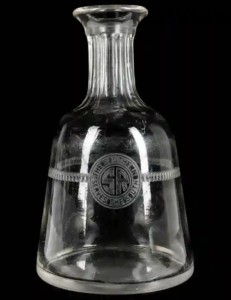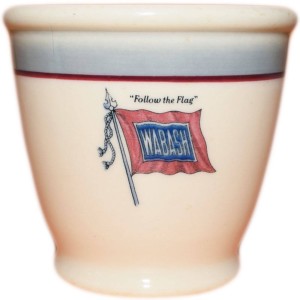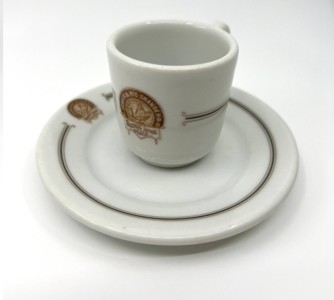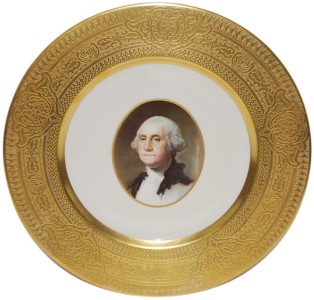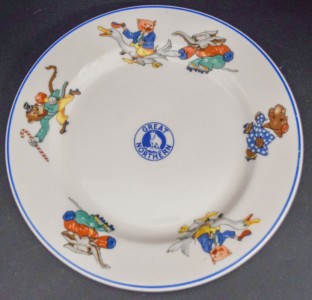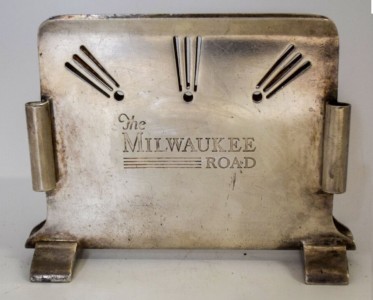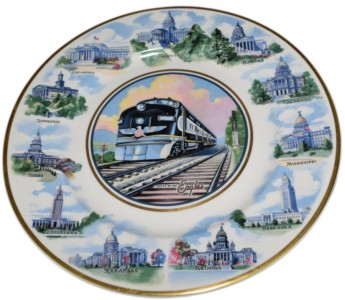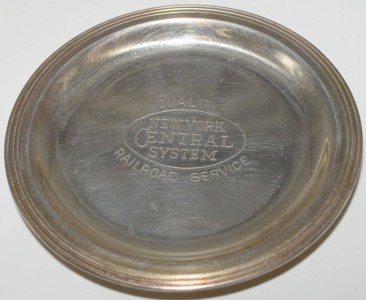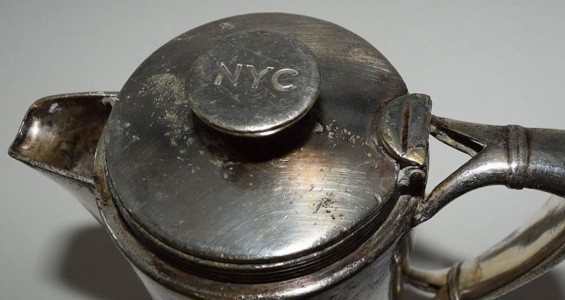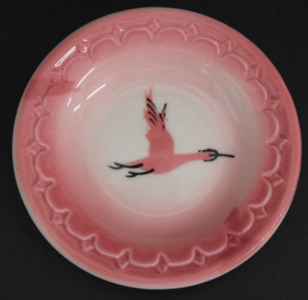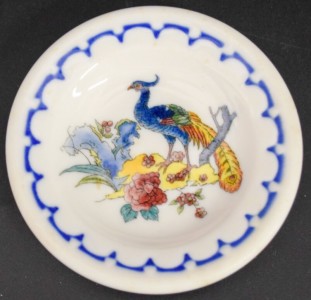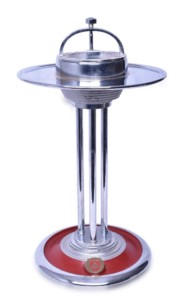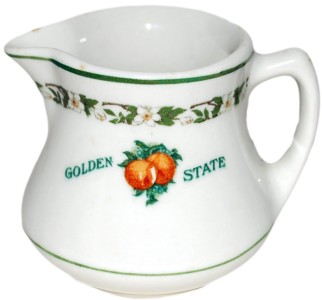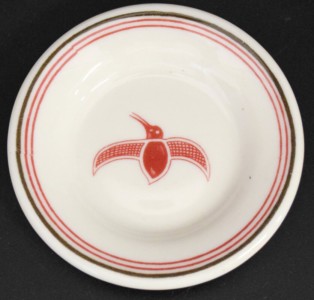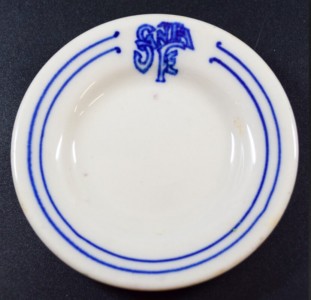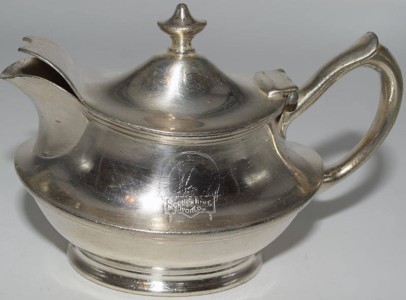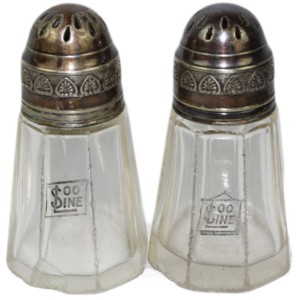 From George Pullman’s first dining car, the 1868 Delmonico, to the advent of Amtrak, enjoying a meal in the dining car as the scenery rushed by was the epitome of luxury travel. Many elements made that experience special–food that compared with the finest restaurants and hotels, service without peer, and, not in the least, the fashionable table settings that made every traveler feel like royalty. Railroads touted the quality of their food service as a means of competing with rival lines for travelers. In doing so, they promoted the overall dining experience, ranging from the variety of dishes offered to the elegant china and silverware, sparkling glassware, and crisp linens that graced dining car tables. While that era has passed, the artifacts that were an essential component of the dining car experience survive and offer a taste of bygone elegance for the collector.
From George Pullman’s first dining car, the 1868 Delmonico, to the advent of Amtrak, enjoying a meal in the dining car as the scenery rushed by was the epitome of luxury travel. Many elements made that experience special–food that compared with the finest restaurants and hotels, service without peer, and, not in the least, the fashionable table settings that made every traveler feel like royalty. Railroads touted the quality of their food service as a means of competing with rival lines for travelers. In doing so, they promoted the overall dining experience, ranging from the variety of dishes offered to the elegant china and silverware, sparkling glassware, and crisp linens that graced dining car tables. While that era has passed, the artifacts that were an essential component of the dining car experience survive and offer a taste of bygone elegance for the collector.
 China. The earliest dining car china of the 19th century was usually particularly heavy and top-marked with the initials or logo of the railroad. In the early 1900s china with company logos and pinstripe or other simple borders became the norm. During the 1920s more elaborate borders appeared, often floral or classical. In the 1930s a number of lines adopted patterns that depicted flowers of the region they served. With the advent of streamliners in the late 1930s, the new trains were furnished with complementary china patterns that furthered the image of modernity. It should also be noted that from the earliest days on numerous railroads used stock and custom patterns where the only indication of railroad use was a backstamp with the line’s name or initials.
China. The earliest dining car china of the 19th century was usually particularly heavy and top-marked with the initials or logo of the railroad. In the early 1900s china with company logos and pinstripe or other simple borders became the norm. During the 1920s more elaborate borders appeared, often floral or classical. In the 1930s a number of lines adopted patterns that depicted flowers of the region they served. With the advent of streamliners in the late 1930s, the new trains were furnished with complementary china patterns that furthered the image of modernity. It should also be noted that from the earliest days on numerous railroads used stock and custom patterns where the only indication of railroad use was a backstamp with the line’s name or initials.
 As with all generalizations, there are exceptions, and some of those are the most interesting and popular examples of dining car china. To name a few, the Santa Fe adopted its Mimbreno-pattern china for the streamline Super Chief in the 1930s, based on ancient Native American designs of the Southwest. The Baltimore & Ohio designed a table service based on antique English Staffordshire ware at the time of its 1927 centennial. Similarly, the Chesapeake & Ohio expressed its historical association with George Washington at the 1932 bicentennial of his birth with an elegant pattern evocative of the colonial era.
As with all generalizations, there are exceptions, and some of those are the most interesting and popular examples of dining car china. To name a few, the Santa Fe adopted its Mimbreno-pattern china for the streamline Super Chief in the 1930s, based on ancient Native American designs of the Southwest. The Baltimore & Ohio designed a table service based on antique English Staffordshire ware at the time of its 1927 centennial. Similarly, the Chesapeake & Ohio expressed its historical association with George Washington at the 1932 bicentennial of his birth with an elegant pattern evocative of the colonial era.
 Collectors favor certain pieces, such as demitasse sets, butter pats, gravy boats, and compotes, so they will usually command a higher price than more common pieces in any particular pattern. Rarity is of course also a major factor in demand and value. A line that only had limited food service for a short time will understandably have fewer dining car artifacts than a major line that ran diners for many years. Likewise items from railroads that have a “cult” following, such as Colorado lines, often command a premium- Service plates warrant a special note. These elaborate pieces were found on the table when the traveler was seated and often conveyed an image of the railroad or a name train. They were then whisked away when orders were taken. Some were sold as souvenirs. Those that survive are among the more desirable dining car collectibles.
Collectors favor certain pieces, such as demitasse sets, butter pats, gravy boats, and compotes, so they will usually command a higher price than more common pieces in any particular pattern. Rarity is of course also a major factor in demand and value. A line that only had limited food service for a short time will understandably have fewer dining car artifacts than a major line that ran diners for many years. Likewise items from railroads that have a “cult” following, such as Colorado lines, often command a premium- Service plates warrant a special note. These elaborate pieces were found on the table when the traveler was seated and often conveyed an image of the railroad or a name train. They were then whisked away when orders were taken. Some were sold as souvenirs. Those that survive are among the more desirable dining car collectibles.
 Silver serving pieces. As in the finest hotels and restaurants, custom silverware also graced dining car tables. This included both silver flatware and hollowware. Made of durable silverplate of hotel quality, the design and marking of railroad silver often reflected the accompanying china. Early pieces were usually just bottom- or side-marked with the line’s name or initials. In the early 1900s, logos began to appear that mirrored the markings on accompanying china. Styles also followed the evolution of china decoration and the interior design of the cars themselves. Fancy Victorian-era designs were followed by simpler Arts and Crafts styles. Silverware reminiscent of the Colonial period became popular in the pre-World War I period and continued to be the predominant style until streamline-inspired designs appeared in the late 1930s. As with china, collectors favor silverware that features a top- or side-logo. Pieces that can be identified with a particular name train are also more sought after.
Silver serving pieces. As in the finest hotels and restaurants, custom silverware also graced dining car tables. This included both silver flatware and hollowware. Made of durable silverplate of hotel quality, the design and marking of railroad silver often reflected the accompanying china. Early pieces were usually just bottom- or side-marked with the line’s name or initials. In the early 1900s, logos began to appear that mirrored the markings on accompanying china. Styles also followed the evolution of china decoration and the interior design of the cars themselves. Fancy Victorian-era designs were followed by simpler Arts and Crafts styles. Silverware reminiscent of the Colonial period became popular in the pre-World War I period and continued to be the predominant style until streamline-inspired designs appeared in the late 1930s. As with china, collectors favor silverware that features a top- or side-logo. Pieces that can be identified with a particular name train are also more sought after.
 Glassware and Linens. Railroads often had custom glassware to complete the table service. Early pieces had company names or logos etched into the glass. Later on markings were applied with enamel. After World War II, enameled stenciling enabled the production of multi-color designs on railroad glassware. Completing the total setting were the high-quality tablecloths and napkins that graced dining car tables. Quite often these had railroad logos or initials woven into the fabric.
Glassware and Linens. Railroads often had custom glassware to complete the table service. Early pieces had company names or logos etched into the glass. Later on markings were applied with enamel. After World War II, enameled stenciling enabled the production of multi-color designs on railroad glassware. Completing the total setting were the high-quality tablecloths and napkins that graced dining car tables. Quite often these had railroad logos or initials woven into the fabric.
References. There are a number of books that can provide more on the history of dining car service and guide the collector through the myriad patterns and styles of dining car artifacts. For china, there are two basic references: Richard Luckin’s “Dining on Rails” (multiple editions) and Douglas McIntyre’s “Official Guide to Railroad Dining Car China” (1990). Silver serving pieces have John Fowler’s “Silver in the Diner” (2019) and Everett Maffett’s “Silver Banquet” (1980) and “Silver Banquet II” (1990). “Silver at Your Service” (1987) by Arthur Dominy and Rudolph Morgenfruh is a guide to railroad flatware. And finally Larry Paul’s “Sparkling Crystal” (1991) covers the field of dining car glassware. While these are not currently in print, copies can be found online or at railroadiana shows. As a final note, a video presentation on dining car collectibles can be viewed below.
GALLERY

